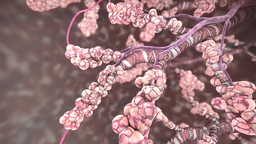Induction of human alveolar cells via modulation of TGFb and BMP signaling
TECHNOLOGY NUMBER: 2023-005

OVERVIEW
A new method for evaluating cellular signaling in the bud tip during lung development- Discovery that inhibition of TGFb and stimulation of BMP yield AT2-like cells in vivo
- In vivo pathways that can be leveraged for production of AT2-like organoids in vitro
BACKGROUND
Embryologic development of lung tissue begins about 5 months after conception when a lung bud begins to separate from the foregut. As the lung bud begins to separate into two distinct structures, specialized epithelial progenitors known as bud tip progenitors (BTPs) differentiate and give rise to all the cells in the tree-like network of epithelial tubes. BTPs undergo repeated bifurcations to give rise to the trachea as well as the bronchi and bronchioles. During the subsequent phase of development known as the canalicular stage, cells of the epithelial stalk region directly proximal to BTPs differentiate into alveolar type 1 (AT1) and type 2 (AT2) lineages. While the descendants of BTPs transition into airway or alveolar cells as influenced by environmental cues, the mechanisms promoting human alveolar differentiation are not fully characterized. A need exists for research to further define the cellular signaling pathways that promote alveolar differentiation in BTPs.
INNOVATION
Researchers at the University of Michigan have developed a method for using single cell RNA-sequencing and computational approaches to interrogate cellular signaling in the bud tip during lung development. The investigators discovered that transforming growth factor beta (TGFb) and bone morphogenic protein (BMP) exert opposing effects on human alveolar differentiation. Simultaneous inhibition of TGFB and stimulation of BMP signaling cause bud tip progenitors (BTPs) to efficiently differentiate into alveolar type 2 (AT2)-like cells in vitro. The resulting AT2-like organoids can be expanded for more than 100 days in appropriate media, they express mature AT2 markers, and they also secrete lamellar bodies. Comparison of TGFb/BMP induction with existing methods for generating AT2 cells confirmed specific gene expression patterns, induction efficiencies, and homogeneity of emergent cell types. The inventors therefore show that BMP and TGFb are important signaling pathways regulating nascent alveolar differentiation in vivo that can be leveraged for production of AT2-like organoids in vitro.